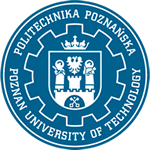


Narodowe Centrum Badań i Rozwoju, Polsko-Norweska Współpraca Badawcza, “Norway Grants”, nr Pol-Nor/197025/37/2013
Czas realizacji: 08/2013 – 04/2017
Kierownik projektu: prof. dr hab. inż. Jacek Mąkinia
Partnerzy: Politechnika Gdańska, Politechnika Poznańska, Politechnika Śląska, Aquateam COWI AS
Budżet: 3 649 030,00 PLN
State of the art solutions for WWTPs call not only for meeting stringent effluent quality standards but also for maximum energy recovery from wastewaters; thereby, promoting renewable energy sources. Typically aeration consumes over 50 % of total plant energy requirements where nitrification is one of the most energy consuming processes. Additionally, the increasing sludge production is causing serious and growing problems with its management, but also greenhouse gases emission is an emerging issue. The aim of the project is to develop a novel sustainable technology that combines increased biogas production with enhanced nutrients removal from reject water. Through the enhanced primary treatment by organic coagulant/flocculant addition the organic load of biological treatment is reduced while the primary sludge production for digestion is increased. Thus, the process leads to improved energy balance in the plant and at the same time reduction in excess sludge production. However, carbon shortage for denitrification and phosphorus removal may occur. To prevent this the nitrogen load originating from reject water after dewatering of digested sludge can be reduced by using partial nitrification and anammox processes, whereas, remaining nutrients in the effluent from anammox process can be reduced in algae or wetland system. This will reduce nutrients load to the main stream and at the same allow for reducing organic carbon demand for denitrification and phosphorus removal, oxygen demand for nitrification and energy consumption. This project will have positive ecological effects and contribute to environmental protection through improvement of both water and air quality as well as improve energy balance. It will be achieved by reducing nitrogen and phosphorus loads from municipal WWTPs, reducing energy consumption and greenhouse gas emissions, together with onsite enhancing renewable energy sources utilization and the economic efficiency of WWTPs.

